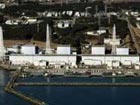| Videos | • Latest |
|
• Feature | • Sports | • Your Videos |
Pumping of contaminated water to end

The month-long struggle to regain control of the Fukushima Daiichi nuclear plant continues in Japan. In the past several days, 11 thousand and 500 tonnes of radioactive water has been discharged into the sea.
As neighbouring countries express their concern, the priority now is to remove the contaminated water to nearby tanks and other storage facilities.
Japanese Officials are hopeful they can stop pumping radioactive water into the sea at Fukushima and instead concentrate on moving some 60,000 tons of contaminated water to nearby storage facilities inside the building that houses Unit Two Reactor turbine.
But problems in restoring cooling systems mean more contaminated water may eventually be pumped into the sea if the complex again runs out of storage capacity.
Hidehiko Nishiyama, Nuclear and Industrial Safety Agency, said, "We are in the final stages of the inevitable pouring of radioactive water into the sea. As we are causing concern to our neighbouring countries and our local fishing industry, we plan to put together a report and announce the results of our actions."
China and South Korea have criticised Japan's handling of the situation, with Seoul going as far as calling it incompetent, reflecting growing unease over the month-long crisis and subsequent spread of radiation.
The plant's operator, TEPCO, said it is continuing to inject nitrogen into nuclear reactors to prevent another hydrogen explosion.
Remotely controlled cranes and trucks are to be used to dispose of radioactive rubble strewn about the grounds which is preventing workers from accessing to certain areas.
An unmanned drone helicopter was set to fly over the four troubled reactors to record damage and gauge radiation in the areas where workers are unable to enter.
 0
0 







Go to Forum >>0 Comments